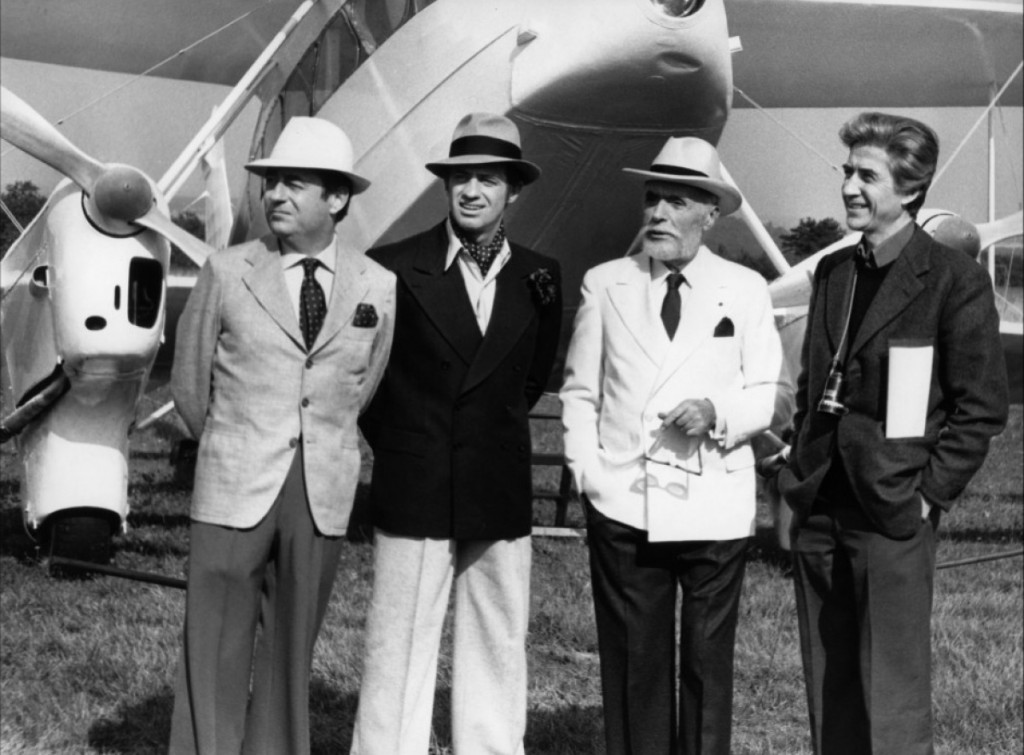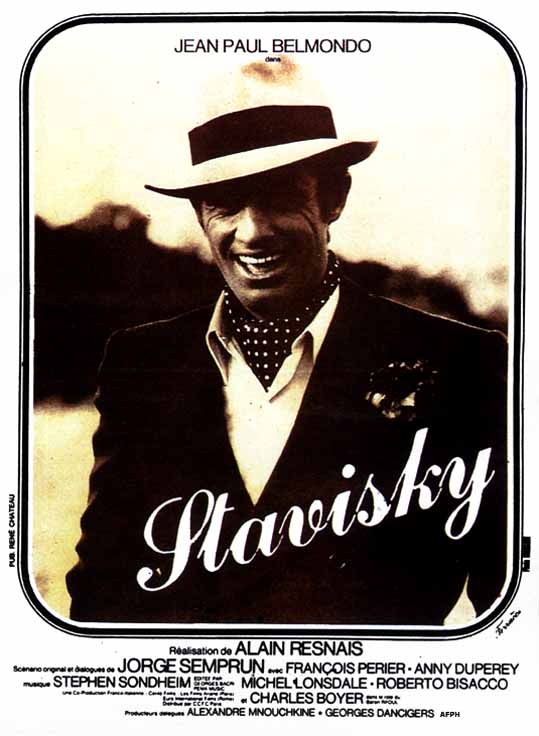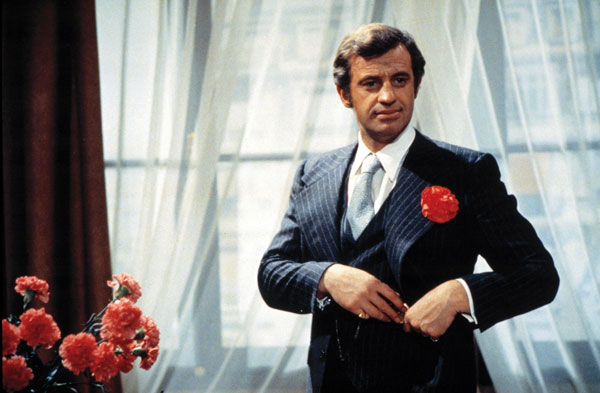There is always a fascination with the role of the past and how quickly it fades into oblivion. The actors and contexts may change, but there is always an unseen hand, proffering the levers that mechanically set in motion the similar yet different syndrome as a clever repackaging of ancient dynamics….
In Alain Resnais’s brilliant film, the dealings of a high placed swindler bring down the Third Republic. Who was the real Stavisky, and how wide was his reach? Its a story about a wilting, flawed elite, oblivious to its impending demise. Stavisky built an empire through a combination of subterfuge, fraud and false identity, becoming an influential and powerful man in France in the period between the wars. He is more of an American type figure in the vein of the Yankee confidence man. His life was the perfect sham which took in businessmen, financiers and politicians of all persuasions. It’s also disconcerting to be reminded by Stavisky: how the global markets have ignored the lessons of history,caught up in their own ponzi schemes. So much so that we must yet again live through the aftermath of international financial corruption on a scale that makes Stavisky’s hustling rather minor when compared to a Madoff or the Stavisky’s working on Wall Street.

---As Docteur Mézy (Michel Lonsdale) claims, “To understand Stavisky sometimes you have to forget files. You have to dream of him and to imagine his dreams.” The actual Stavisky remains an enigma – there is no real secret to him. Like his fortune, he simply invented himself.--- Read More:http://www.sensesofcinema.com/2011/cteq/stavisky%E2%80%A6/ image:http://www.toutlecine.com/images/film/0003/00037586-stavisky.html
Briefly the real Stavisky was an entrepreneur, an impresario and an accomplished swindler who bribed politicians, the police, the courts and the press; he also squandered all of his own wealth. When he flooded France with fake vouchers in 1932, the banks were closed. As a result, there were violent street riots early in 1933, in which a number of persons were shot by the police. The Government could no longer rely on the loyalty of the army or the police, and Premier Edouard Daladier was forced to resign. (Stavisky himself appears to have been an apolitical adventurer, although he had a megalomaniacal belief that he could solve the economic problems of Europe—and also end unemployment. Apparently, the press dwelled on the fact that he was a Russian Jew, and the fascist agents in France exploited the anti-Semitic issue by insisting that foreign crooks were out to ruin the nation. Read More:http://movies.nytimes.com/movie/review?res=9A06E6D9153FEF34BC4850DFBF66838F669EDE

Dawson:Chronicling the last act of Stavisky’s life as he continues to court public and financial attraction and exposure like a dark star even as he desperately tries to salvage his disintegrating financial empire, plan his next scam, and duck the authorities, the film captures the rhythms of the rapidly (and, alas, irreversibly) shifting socio-political landscape of Europe in that false calm between the devastation of two world wars. A parallel subplot about Leon Trotsky and the increasingly rightist politics within the French establishment that would see the Russian thrown out of France, mirrors Stavisky’s equally tragic fall. These insistent historical parallels, of course, can be put down to the powerful beliefs of screenwriter Jorge Semprun as well as Resnais’ own sense of the overriding synchronicity of all things. Read More:http://www.sensesofcinema.com/2011/cteq/stavisky%E2%80%A6/
The Third republic was the longest lasting regime ever to govern France. Between its difficult birth in 1870, and it unlamented death in 1940, it managed to endure for seventy years. It lead France to victory in WWI and produced leaders like Clemenceau. But in the midst of these achievements something happened to the Third Republic that sapped its vitality, and at the first sign of an external threat it rolled over and passed out. The collapse was sudden but its roots were deep: The Third Republic was suffering from a steady, creeping enfeeblement for which there was no cure. It could endure neither its vices nor their remedies.

Jonathan Dawson:Alain Resnais was a contemporary of the nouvelle vague, that group of largely Cahiers du Cinéma aligned critics-turned-filmmakers that most famously included Jean-Luc Godard and François Truffaut. Resnais, on the other hand, belonged to the more literary coterie situated on Paris’ Left Bank, which included Agnès Varda, Jacques Demy and other filmmakers and writers with a commitment to modernism and, of course, leftist politics. In 1974, after the wild street theatre of the 1968 riots and the “Maoist” posturing of Godard, a film like Stavisky… might have seemed like a charming, stylish detour in Resnais’ rigorous oeuvre. But viewed in light of the fallout of the recent GFC (created with stunningly “derivative” money games and Ponti schemes that all too precisely parallel the voucher schemes of Stavisky), the film can now be read again as both a prescient and deeply polemical work rather than as a jeu d’esprit about a colourful swindler! Read More:http://www.sensesofcinema.com/2011/cteq/stavisky%E2%80%A6/
Among the vices, there was the instability of revolving door governments, 107 in all or about 1.5 per annum. A clan of recurring mediocrities and a multi-party system that contributed to a vacuum of authority. The nation was also polarized between a disillusioned Left and a Right that admired fascism. There was a widespread attitude of defeatism and cynicism. The sclerotic high command was obsessed with the idea of a continuous defensive front, and argued that the horse was better than the tank and that there could be no such thing as aerial combat. There was also a bankrupt, “peace at any price foreign policy” . Finally, there was a series of financial scandals that further undermined the regime by pointing to corruption in high places. Foremost among these was the Stavisky scandal, which was more sweeping than the others since members of all three branches of government were involved. Thanks to Stavisky, the government fell, and Paris experienced the worst street riots it had ever seen.

---He appears as a dual personality: a graceful bon vivant who luxuriates in every conceivable pleasure and an acute melancholic. There's a charming moment when he explains the difference between happiness and pleasure: he says that happiness can occur in a single moment, but that pleasure requires a huge investment of time — and that it's available only to the rich. He's also obsessed by suicides and by mysterious deaths. He was once a scruffy hood, but his friends remark that his present self despises his past one. As Stavisky, whom a journalist of the thirties called "a gentleman among gangsters and a gangster among gentlemen," Jean-Paul Belmondo is at his best. Despite the tycoon's grandeur, he still breaks into a mobster's strut: arms swinging, wearing his shoulders high, he lunges forward with his torso aslant, while his respectable companions walk erect. Mr. Belmondo has all the authority and the gaiety of the man who refused to believe that he could make a mistake. --- Read More:http://movies.nytimes.com/movie/review?res=9A06E6D9153FEF34BC4850DFBF66838F669EDE image:http://www.cineplex.com/Movies/Archives/CS25945/Stavisky/Photo.aspx?id=106015
Or own system is a good analogy for Stavisky: a decaying system that can’t really be patched together which in turn provides a congenial environment for parasites that eventually destroy. Stavisky has been to Stanford, Wharton or Harvard and is now legitimate. The jaunty amorality of a Lloyd Blankfein; Stavisky is seen as a kind of French Arturo Ui, who rises in the system and is accepted by the establishment- the old crocodiles in white shoes, Soros’s phrase-precisely because he is unprincipled. The Third Repu
, Resnais is telling us was a period when dishonesty was rewarded which resonates today.Resnais is also telling us that there are hierarchies of dishonesty. There is first Stavisky the petty crook who prospers thanks to his government connections. There is also the system which closes ranks when it is threatened by Stavsisky and arranges for his disappearance. And there is finally, the reactions of an enraged public opinion, fanned by a dishonest press, which uses Stavisky as a way of bringing down the system.
ADDENDUM:
Watching Resnais’ intriguing film today you can sense the forces unleashed in part by Stavisky’s fall – forces that were to lead to the election of Leon Blum, the first socialist and the first Jew to serve as Prime Minister of France from 1936.
Walk through the posh sixteenth arrondissement today (see if you can catch the reference to it that doesn’t appear in the subtitles) and you can still sense that jealous, old and cold power waiting its turn, counting its money. Should another Stavisky happen along, you can be sure his Madoff-like scam would quickly lure the locals into whipping out their chequebooks yet again! Read More:http://www.sensesofcinema.com/2011/cteq/stavisky%E2%80%A6/





 COMMENTS
COMMENTS